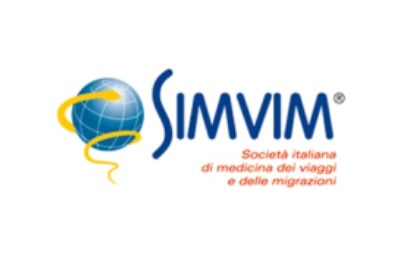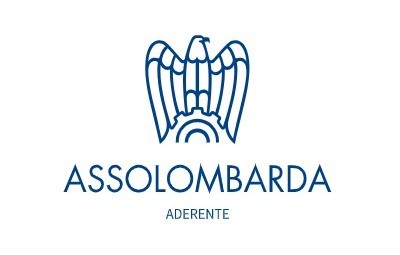Tick-borne encephalitis
Tick-borne encephalitis (TBE) is a disease caused by a member of the virus genus Flavivirus. It is mainly spread by tick bites and is widespread in many parts of Europe, including Italy.
CAUSES
TBE is caused by a single-stranded, RNA Flavivirus and is related to viruses that cause serious diseases, such as yellow fever. It is spread by ticks, particularly Ixodes ricinus and Ixodes persulcatus, which become infected when they feed on the blood of animals carrying the virus, which they in turn spread to other animals and humans.
Two forms of TBE (subtype 1 and subtype 2) are known in the European region. They are extremely similar to each other, sharing 94.4% of the same amino acid sequence.
TRANSMISSION
The virus is spread by the bite of larvae, nymphs, or adult ticks, typically (but not exclusively) of the genus Ixodes ricinus (subtype 1) or Ixodes persulcatus (subtype 2), which infects the host through its saliva. Although much rarer, transmission can also occur through ingestion of unpasteurized dairy products (e.g. milk and cheese) from infected goats, cows, or sheep.
Although evidence of person to person transmission of the virus has yet to be identified, it cannot be entirely ruled out in the case of blood transfusions, where an infected person in the viraemic stage could potentially pass the virus to another susceptible individual.
GEOGRAPHICAL DISTRIBUTION
The disease is currently endemic in at least four Asian countries and 27 European countries, including Italy. Between 2012 and 2016, as many as 12,500 TBE cases were reported, of which 11,623 (93.0%) were confirmed cases and 878 (7.0%) were probable cases. The Czech Republic and Lithuania alone account for 38.6% of all reported cases in Europe.
SYMPTOMS
In 2/3 of cases, the patient is asymptomatic and shows no obvious clinical signs.
In the remaining 1/3 of patients, after an incubation period of 7-14 days, the disease presents with a nonspecific febrile illness that lasts 1-8 days (corresponding to the viraemic phase), accompanied by fatigue, headache, lower back pain, nausea, and general malaise.
After an interval ranging from 1 to 20 days, in which patients are asymptomatic, up to one-third of cases rapidly take on the characteristics of meningitis or meningoencephalitis, with fever, headache, muscle pain, malaise, photophobia, and vomiting. This stage can last for about a week and may be accompanied by paralysis that progresses for two weeks, then partially recedes.
Age, neurological symptoms at onset, and low immunoglobin IgM (glycoproteins that are produced by the human body's immune system in response to an antigen) levels are risk factors in severe forms of tick-borne encephalitis. Cases in which the disease progresses from a febrile syndrome to a CNS (Central Nervous System) disorder, without an intermediate asymptomatic period, or a biphasic disease course with a short asymptomatic interval, have been associated with severe forms of TBE.
The disease is usually milder in children.
DIAGNOSIS
The first sign of a possible TBE infection is a tick bite in areas and seasons where transmission of the disease is common.
Etiological (causative) diagnosis is obtained by analysing serum collected in the early, acute stage of the disease to detect the presence of specific IgM antibodies. Serological diagnosis can present the issue of cross-reactivity due to prior vaccinations or previous flavivirus infections. However, the TBE virus can also be identified by measuring a patient’s CPR (C-reactive protein), which is produced by the liver in much higher concentrations in inflammatory conditions.
TREATMENT
There is no specific treatment for tick-borne encephalitis. Patient care mainly involves supportive therapies to manage symptoms. Severe case may involve intensive care.
PREVENTION
Prevention of tick-borne encephalitis virus starts with presenting the insect bites. Wearing suitable clothing can make it difficult for the tick to access the skin, but they must be absolutely airtight to work successfully. Insecticides and insect repellents are helpful, and it is always important to choose a safe place to sleep. A vaccine is available and recommended if you are exposed to the risk of infection during outdoor activities in endemic rural areas.
Source: Istituto superiore della sanità meningoencefalite; CDC encefalite da zecche
Bibliografy
Moroni M., Spinello A., Vullo V. Manuale di Malattie Infettive. Edra LSWR, Masson, 2014.
Bartolozzi G. Vaccini e Vaccinazioni, Seconda Edizione. Masson 2015.
Rugarli C., Obiass M., Medicina interna Sistematica, Quinta Edizione. Masson 2015; 1585-1586
Beauté J.,Spiteri G.,Warns-Petit E., Zeller H. Tick-borne encephalitis in Europe, 2012 to 2016. Surveillance and outbreak report. Eurosurveillance. Article submitted on 18 Apr 2018 / accepted on 16 Aug 2018 / published on 08 Nov 2018.
Daniel Ruzek, Tatjana Avšič Županc, Johannes Borde, Ales Chrdle, Ludek Eyer, Galina Karganova, Ivan Kholodilov, Nataša Knap, Liubov Kozlovskaya, Andrey Matveev, Andrew D. Miller, Dmitry I. Osolodkin, Anna K. Överby, Nina Tikunova, Sergey Tkachev, Joanna Zajkowska. Tick-borne encephalitis in Europe and Russia: Review of pathogenesis, T clinical features, therapy, and vaccines. Antiviral Research 164 (2019) 23–51





